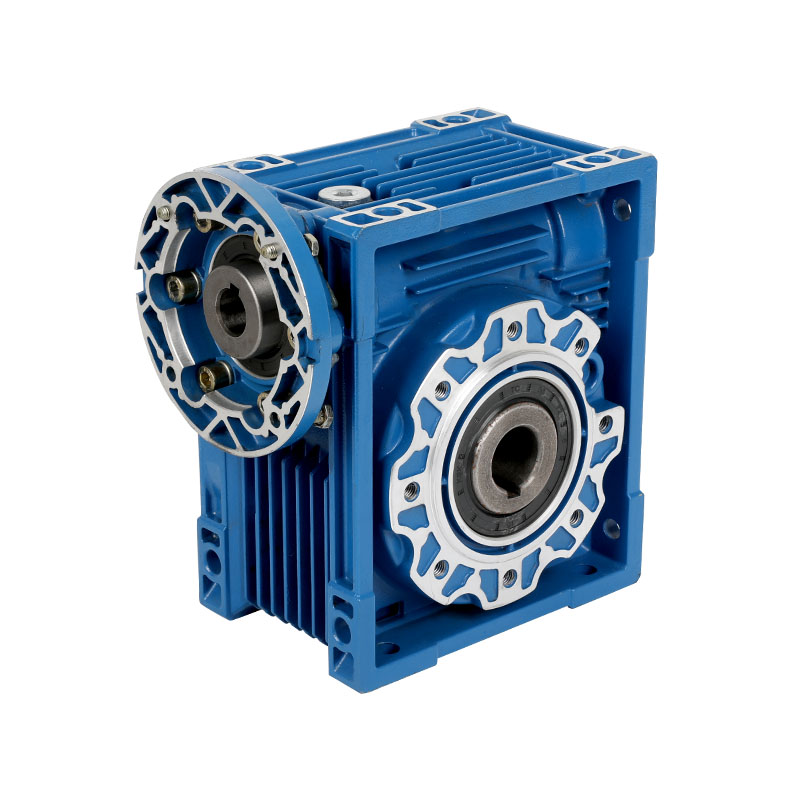RV Worm Gear Reducer is widely used in industrial robots, automation equipment, precision machinery and other fields due to its compact structure, large transmission ratio and smooth operation. However, due to the large sliding friction between its worm wheel and worm, the traditional RV reducer often has the problem of low efficiency in the transmission process. Therefore, how to effectively improve its transmission efficiency has become the focus of current research and application. This paper will explore the methods of improving the transmission efficiency of RV worm gear reducer from the following aspects.
1. Optimizing material selection and surface treatment technology
The selection of materials directly affects the friction characteristics and wear resistance between worm gears and worms. Traditional worm wheels are mostly made of tin bronze, while worms are made of carbon steel or alloy steel. In order to reduce the friction coefficient and reduce energy loss, a combination of high hardness and low friction coefficient materials can be selected, such as nitrided steel, ceramic coating or stainless steel worm with modified plastic or composite worm wheel.
In addition, surface strengthening treatment of the worm, such as nitriding, carburizing, chrome plating or laser quenching, can significantly improve its surface hardness and wear resistance, thereby reducing the energy loss caused by wear and improving the overall transmission efficiency.
2. Improve lubrication methods and use efficient lubricants
Good lubrication is the key to reducing frictional heat and energy loss between worm gears. The viscosity, extreme pressure additives and antioxidant properties of lubricants should be reasonably selected according to working conditions. In recent years, synthetic lubricants (such as PAO and ester oils) have been widely used in high-performance reducers due to their excellent high-temperature stability and anti-wear properties.
At the same time, the use of forced lubrication or circulating cooling systems can effectively remove the heat generated by friction, maintain a stable lubrication state, and prevent viscosity drop and oil film rupture caused by temperature increase, thereby further improving transmission efficiency and extending service life.
3. Optimize structural design and meshing accuracy
The impact of structural design on transmission efficiency cannot be ignored. By optimizing parameters such as the worm lead angle, module, and tooth profile curve, the sliding speed can be reduced to a certain extent and the meshing efficiency can be improved. For example, appropriately increasing the lead angle helps improve transmission efficiency, but it is necessary to take into account self-locking performance and load-bearing capacity.
In addition, improving the processing and assembly accuracy of worm gears, reducing tooth side clearance and meshing errors, can help achieve a more uniform load distribution, reduce local friction losses, and thus improve overall transmission efficiency.
4. adopt new worm forms and composite transmission structures
Traditional cylindrical worm transmission has efficiency bottlenecks, while new worm forms such as arc tooth cylindrical worm (ZK worm) and conical envelope worm (ZC worm) have higher contact area and better transmission characteristics, which can significantly improve transmission efficiency.
At the same time, combining the advantages of planetary gear transmission, developing a composite RV reduction mechanism can also help share the load and optimize the power transmission path, thereby improving overall efficiency while ensuring a large transmission ratio.
5. strengthen manufacturing process and quality control
High-precision manufacturing process is the basis for achieving efficient transmission. Advanced processing technologies such as CNC grinding, hobbing, and honing are used to ensure the geometric accuracy and surface finish of worm gears. In addition, a strict quality inspection system, such as the use of three-coordinate measuring instruments, gear inspection centers and other equipment, conducts full inspections of key components to ensure that each reducer has good meshing performance and transmission efficiency.
Improving the transmission efficiency of RV worm reducers is a systematic project that requires comprehensive optimization from multiple aspects such as materials, lubrication, structural design, and manufacturing processes. With the continuous development of new materials, new processes and intelligent lubrication systems, in the future RV reducers will achieve higher transmission efficiency and lower energy consumption while maintaining the advantages of high transmission ratio and compact structure, providing stronger support for the development of intelligent manufacturing and high-end equipment.

 English
English русский
русский bahasa Indonesia
bahasa Indonesia
